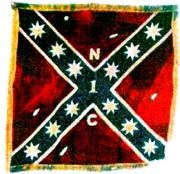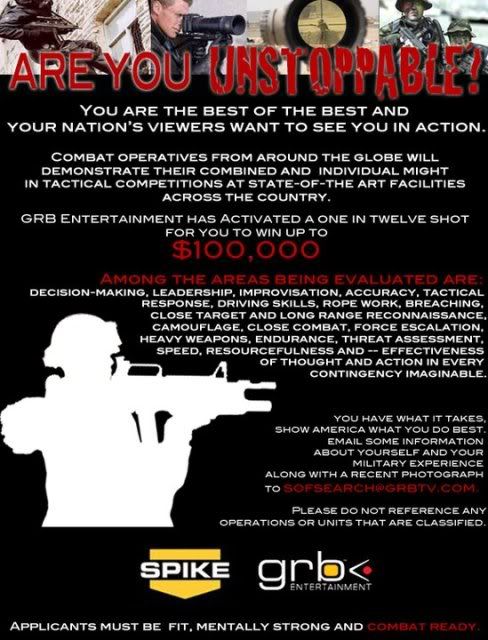“The Jessie Scout was a Federal soldier, dressed and armed a la Rebel. He was named after Mrs. Jessie Fremont, wife of the General of that name, who first suggested that mode of obtaining information.?“When a Rebel was captured, his furlough or pass was taken from him, and also his outer garments. A soldier was then found, who resembled him in size, age, and general appearance. The Rebel’s uniform, from hat to boots, was put upon this man, who assumed the name of the prisoner, and the Federal left the camp, a soldier of the Confederacy…. These Jessie Scouts generally preceded the advance of the army, and they frequently picked up a great many prisoners, without creating any alarm. I made the acquaintance of many of them, and found them bold, dashing, reckless, good fellows. I met Major Young, Sheridan’s chief of scouts, and found him eminently fitted for outpost duty and border warfare.”-John Opie, 1899
Every once in awhile, I will come across some history that I have to share. If you are a reader of the blog, you will know that I am particularly interested in history that involves contractors and their contribution to that particular war. During the Civil War, there were privateers and camp followers, but there was also a very unique type of contractor that was used for incredibly dangerous missions. These were the civilian scouts. Specifically, the Jesse Scouts are the group I would like to focus on.
I like to refer to them more as pseudo operators, as opposed to just spies. These guys would purposely wear the uniform of the enemy as a means to operate behind enemy lines. Their missions varied from spying to conducting raids, and the risks associated with getting caught could result in torture and death. They were very much hated, and definitely earned their higher pay. They also provided crucial intelligence for the war, and they were pretty damned good at ‘capturing flags’. lol
Now what is interesting about the Jesse Scouts, or any of the other scouts/spies of either side, is the fact that these were blended work forces. Meaning they had enlisted scouts mixed with civilian scouts. I imagine the civilian scouts were used because they brought a special skill set to the table–like the ability to guide folks through enemy country, smuggle things, or whatever capability a force at that time might need.
I should also bring up how I stumbled upon the Jessie Scouts. During my research into the 8 civilian recipients of the Medal of Honor during the Civil War and Indian Wars, I had perked up when reading about a certain civilian scout named William Woodall. I was curious about the unit he served in as a ‘Chief Civilian Scout’. Here is the citation:
William H. Woodall
Rank and Organization: Civilian scout, U.S. Army, Major General Philip H. Sheridan’s Headquarters, during Civil War.
Place and Date: Virginia, Appomattox campaign, Sailors Creek, March 29 to April 9, 1865. Entered service at Winchester, Virginia. Birthdate: unknown.
Date Of Issue: 25 April 1865.
Place: Washington, D.C., 3 May 1865.
Note: Was Chief Civilian Scout for Major General Philip H. Sheridan’s Cavalry Corps, which consisted of VI and XIX Corps.
Citation:
Captured flag of Brigadier General Rufus Barringer’s headquarters brigade.
The following flag is listed as headquarter flag of General Rufus Barringer. After the promotion of James B.Gordon to Brigadier General, Barringer was put into command of the 1st NC Cavalry. When Gordon was killed, Barringer received his promotion to General and was now in charge of the North Carolina Brigade in the Cavalry Corps of the Army of Northern Virginia. So this is probably the last flag the 1st NC Cavalry followed into battle. At least US archives list this flag together with the regiment.
On morning of April, 6, 1865, a small party of federal soldiers, dressed as Confederates, captured General Barringer and his guard. Together with the General this flag was captured also.
Remarkable is that this flag, although used by cavalry, has with 47×47 inches the size of an Infantry Battle Flag of the Army of Northern Virginia. The blue cross bars are 5inches wide, the white stripes are 0.5 inches. The flag has 13 white applied five pointed stars on both sides, at 3.25 – 3.5 inches in diameter. The white frame arround the flag has a width of 2 inches. The flag is made of so called Bunting, with only the white parts being cotton. The flag is now in the North Carolina Museum of History in Raleigh, NC.
After putting together the pieces, I was directed toward the unit he was in. Not only did he serve as a civilian scout in this famous unit, he was also called upon for a covert operation in Mexico in which he was killed. Here is the story I found while at David Phillip’s excellent website on the subject:
Why America took interest in what was happening in Mexico
Following Lee’s surrender at Appomattox, Grant knew that a large Confederate army remained in Texas. Of equal concern, a large European army composed of French, Austrian, and Belgian troops were fighting among side Imperial Mexican soldiers supporting Maximilian, an Austrian prince. Grant’s fear involved the creation of an allied army of former Confederates, Europeans, and Imperial Mexicans that would continue the Civil War out of Mexican territory. He quickly ordered Sheridan and a large number of veteran Union troops to move west.
While the records are vague and confusing, there are indications that two separate – and compartmented – programs were developed. The first was encouraged, if not ordered, by Grant that resulted in a former general, Lew Wallace, managing an essentially civilian-mercenary effort. The second program involved US Army officers and enlisted soldiers serving as advisors, trainers, and in some cases they may have participated in combat operations.
The Jessie Scouts involved arrived in the theater of operations in mid-1865 and their operations apparently concluded in early 1867 with Sergeant Jim White delivering a diplomatic note deep inside Mexico to Benito Juarez’s provisional government in an effort to prevent the execution of Maximilian.
Scout casualties were heavy. Available Union army records indicate that Lieutenant-Colonel Henry H. Young and four enlisted scouts were involved under Sheridan, but this was probably the advance party. Scout Arch Rowand’s letters from New Orleans indicated that several scouts requested discharges with their parent regiments, but available evidence exists to show that 12-15 enlisted scouts and Young entered Mexico by boat from New Orleans in late October 1866 and most were killed under relatively mysterious circumstances. Young was definitely a casualty and former Confederate, William H. Woodall, also a Medal of Honor recipient, was probably killed. The identities of the remaining scouts who lost their lives are unknown.
The scouts delivered intelligence to Sheridan’s headquarters that enabled him to understand what was occurring throughout northern Mexico. They also developed individual operations against Imperial Mexican commanders and may have recruited two former Confederate officers to kill the Mexican commander at Matamoras. Currently, it is difficult to assess overall the impact the scouts had in supporting Sheridan’s operations into Mexico as much of their reporting has not been discovered.
Pretty interesting history, and William was a stud. Definitely check out the links below that I have provided, to include a PDF of William G. Beymer’s book about the Jessie Scouts called On Hazardous Service. My take away from all of this is that during that war, every resource and able bodied man and woman was essential to both sides. At the time, using private industry to help accomplish the mission was certainly a part of the strategy. And recognizing men and women civilian contractors for their heroism was also something we did back then.
The Jessie Scouts were also the special forces of the Union. You could easily compare them to MACV SOG who would drop special forces behind enemy lines during the Vietnam War, or to the Selous Scouts who would operate behind enemy lines in their war in Africa. The common tactic of all of these units was to blend into their environments by wearing the uniform of the enemy, and use every ounce of their wits and capabilities to survive and accomplish the mission. They also depended upon captured and turned enemy combatants to further give them an edge behind enemy lines. Anything it took to accomplish the mission, these forces did it.
The most profound point the reader can take away from this history is that contractors were used for ‘offensive operations’ in past US wars. That they were right there with the military, doing the extremely dangerous work of war fighting. These contractors also paid a horrible price when they got caught by the enemy. The contractors back then were even used to protect Lincoln (Pinkertons), which also makes a pretty amazing statement as to the public/private relationship back then. Pretty cool history, and check it out. –Matt

The flag William Woodall captured.
The pay of a civilian scout.
Shortly after the beginning of the Civil War, he became a civilian “Scout” for the Union Army. Civilian “Scouts” were very well paid, sometimes as much as $1-$3 per day or $30-$90 or more a month depending on the hazardous nature of their mission in enemy territory. (Note: The base pay of a private soldier in the Union Army was $13 a month).
Link to source here.
————————————————————–
Jessie Scouts – Special Operations Forces (SOF) of the American Civil War.
The Jessie Scouts, dressed in Gray, raised havoc behind Confederate lines.
The Jessie Scout did in the American Civil War what US Military Special Operations Forces do today
By David L. Phillips
————————————————————–
Jessie Scouts
From Wikipedia, the free encyclopedia
Jessie Scouts were irregular soldiers during the American Civil War on the side of the Union who operated in territory of the Confederate States of America in the southern United States in insurgency missions. The unit was created by John C. Frémont and named in honour of his wife, rather than of a Colonel Jessie, who was himself a myth. The initial Jessie Scout unit was formed in St. Louis, Missouri early in the war as the plan to develop independent scouts was implemented. The first man to command the scouts was Charles C. Carpenter. The Jessie Scouts wore Confederate uniforms with a white handkerchief over their shoulders to signify their allegiance to friendly troops, and number around 58 for much of the war, commanded by Major Henry Young.
————————————————————-
From the book, On Hazardous Service
By William G. Beymer
Archibald Rowand Jr.
To Major H. H. Young, of my staff, chief of scouts, and the thirty or forty men of his command, who took their lives in their hands, cheerfully going wherever ordered, to obtain that great essential of success, information, I tender my gratitude. Ten of these men were lost.—From Gen. Philip H. Sheridan’s report of the expedition from Winchester to Petersburg, Virginia. February 27— March 28, 1865. Official Records, Vol. 46: I: 481. “THIRTY or forty men, of whom ten were lost.” It was not chance which worded that phrase. Sheridan has chosen his words well. Of the ten, no one of them died as do men in battles; two were found by their comrades hanging by their own halter-straps; several more died like trapped animals, fighting desperately, at bay. And the others—never returned. Until the Great Book opens it will never be known where, or how, they died; they never returned, that is all. Of the ten, not a man was wearing the uniform of the country for which he died.
